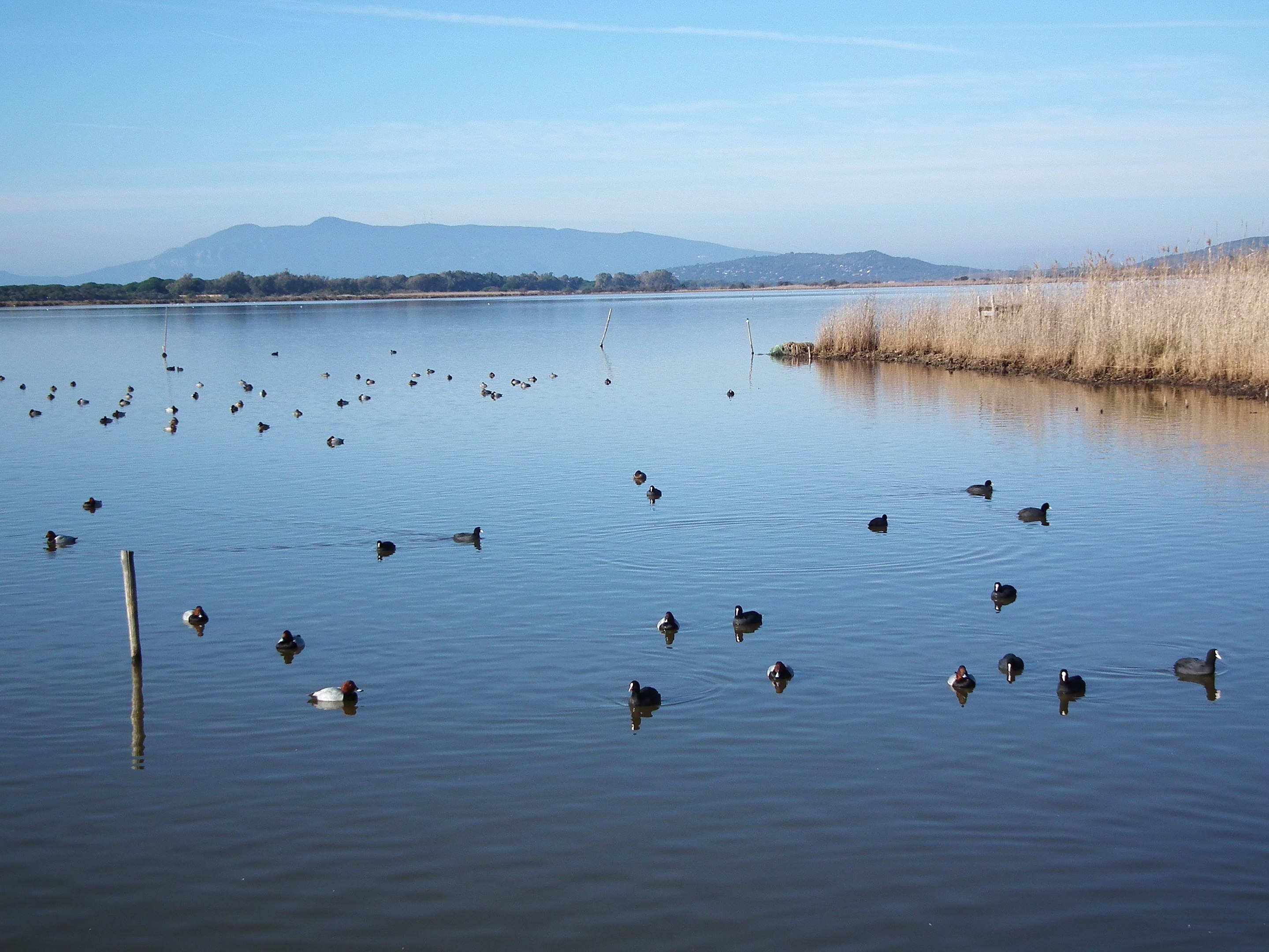Lake Burano is a coastal brackish lagoon at the southern end of the Grosseto Maremma, in the municipality of Capalbio. It covers about 236 hectares and has an average depth of one meter. It is separated from the Tyrrhenian Sea by a narrow strip of dunes, which constitutes one of the best preserved coastal stretches in the region from a naturalistic point of view.
Environmental protection
The lake and the surrounding area are included in the Lake Burano Nature Reserve, a state reserve established in 1980 and entrusted to the WWF which established the Burano Lake Oasis there.
The reserve, in turn, is included in the wetland area of international importance “Lago di Burano” established in 1977 and which extends for 410 hectares.
In 1995 part of the lake area was declared a site of community interest, in 2016 it became a special conservation area. In 1998, the special protection area “Lago di Burano” was also established for an area of 489 hectares.
The area of the lake and the coastal dune are also part of the much larger Important Bird and Biodiversity Area IBA193 “Argentario, Orbetello Lagoon and Lake Burano”.
SIR “Duna of Lake Burano”
The site of regional interest “Duna del Lago di Burano” is almost entirely included in the State Nature Reserve and almost entirely included in the wetland of international importance, pursuant to the Ramsar Convention, “Lago di Burano”.
The main internal critical elements of the site are:
•load of beach tourism rather high during the summer season.;
•risk of coastal erosion (currently the coastline is advancing);
•for nesting birds, a cause of threat is represented by dogs left free, during the nesting period.
The main external critical elements to the site are:
•presence of important tourist centers near the site;
•strong anthropization of the sandy coasts, with growing rarefaction and fragmentation of the residual areas with vegetation and fauna in a good state of conservation, with consequent risk of extinction for small isolated populations;
•linear transport infrastructures towards the hinterland (road and railway axes).
The main conservation objectives to be adopted are:
•protection of the integrity of the dune ecosystem (EE);
•maintenance of the load of seaside tourism at relatively low levels and reduction of the main impacts deriving from it (E);
•reduction of fragmentation/isolation phenomena (E). d) Protection of the integrity of the plant formations characteristic of the dune system and behind the dunes (E).
Indications for conservation measures:
•Maintenance of the site’s high levels of naturalness, in particular avoiding the creation of new accesses (EE).
•Protection/renaturalization of stretches of sandy coast outside the site, in order to reduce isolation/fragmentation phenomena (E).
• Strengthening of actions aimed at reducing the impact of seaside tourism, largely already implemented by the WWF (installation of educational-information panels, indications of preferential access routes, fences to protect dune sectors under erosion, shuttle service) (M) .
•Carrying out surveillance activities during the most sensitive periods, especially on spring holidays, to avoid the presence of dogs not kept on a leash (M).
•Limitation of any beach cleaning interventions, with manual removal of non-vegetable materials only (M).
In April 2012, the recognition of Italian Wonder was conferred on the oasis of Lake Burano.
Geomorphology
As regards the SIR “Duna del Lago di Burano”, the prevailing environmental typology is given by coastal dunes with Mediterranean scrub and beach vegetation. Rare example of a highly natural dune environment characterized by perticaie of Juniperus sp. Pl.
Fauna
Among the many species of aquatic birds that are sedentary, or that stop in the lake for a short time, during the migrations, we remember the pink flamingo, the cormorants, the herons, the coot, the tufted duck, the pochard, the mallard and the shoveler (symbol of the WWF Oasis), the water rail and the kingfisher. Among the birds of prey, there are marsh harriers and ospreys.
Dune of Lake Burano
Among the most interesting nesting bird species are Charadrius alexandrinus, Calandrella brachydactyla.
Of note among the amphibians Bombina pachypus, endemic species of peninsular Italy and Triturus carnifex.
Among the invertebrates is the Lepidoptera Euplagia quadripunctaria.
The dune is also frequented by mammals such as porcupines, foxes and wild boars, which are difficult to spot but whose footprints in the sand are easy to spot.
Among the reptiles: Herman’s tortoise (Testudo hermanni) and the cervone (Elaphe quatuorlineata).
Flora
The vegetation of the dune consists both of trees such as holm oak and cork oak, and of bushy plants such as prickly juniper, Phoenician juniper and myrtle, with the presence of sarsaparilla< /strong> (called “stracciabrache” in the local dialect, for easily understandable reasons) and asparagus. The important pioneer vegetation of the beach enjoys adequate protection, given that the cleaning operations are carried out without the use of mechanical means and leaving the stranded organic material (essential also for the survival of numerous species of beetles and other invertebrates).
For the phytocenensis, crucianelleti of the Burano dunes are worth mentioning. Juniperus macrocarpa juniper groves in the Burano dunes. Floristic populations typical of dune and back-dune habitats.
Tower of Buranaccio
The current fortification was built around the middle of the sixteenth century, in the place where a pre-existing structure from the Middle Ages probably stood.
The tower was the southernmost defensive outpost of the State of the Garrisons and was located right on the border with the Grand Duchy of Tuscany and the State of the Church.
In the following centuries the fortification underwent some restructuring interventions which, however, kept the original appearance almost intact.
Buranaccio’s tower recalls thestylistic elements of the more imposing Spanish fortress of Porto Santo Stefano.
The coastal defensive structure is divided into three levels, presenting a square section that rests on a mighty scarp base, with which it is placed in contiguity through a cordon; the walls are mainly covered in stone.
The tower cannot be visited because it is privately owned.



